Geotechnical Developments in US Offshore Wind
Starts: Tue, Jun 2, 2020 9:00 AM CSTEnds: Tue, Jun 23, 2020 11:30 AM CST
Become a Member Now
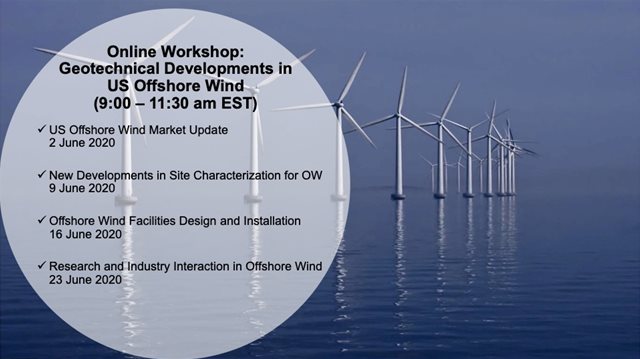
The online workshop comprises four sessions focused on themes below. Presentation titles and abstracts will be confirmed in the next week or two.
Registration
Each registration includes 5 individual connections for each type of registration, regardless of the number of sessions being paid and regardless if the registrant is a member of SUT or not. In order to issue the additional ‘connecting points’, we will require a full name, a company email address, and a phone number of each ‘connecting point’, to be sent to communications@sut-us.org.
Student registrations will be individual and only registrations with a valid ‘.edu’ or corresponding institutional email will be accepted.If you have more than one person viewing these webinars at your location, you can request additional PDH certificates for $10 at the email above.
For more information on using the GoToWebinar software, please scroll to the bottom of the page.
June 2nd: US Offshore Wind Market Update - 9:00am - 11:30am (EST)
| 9:00am |
Welcome and topic/speaker overview Zenon Medina-Cetina (TAMU), Zack Westgate (NGI) |
| 9:10am |
Developer perspective on US offshore wind Arturo Rodriguez (Equinor) |
|
Offshore wind in the US is under development, with only 1 installed wind farm (30MW Block Island). The East Coast has been the epicenter of the US offshore wind industry from different perspectives, from State renewable mandates to large energy demands. However, there is no large installed wind farms (+1GW) yet, and consequently lack of long term understanding of the wind turbine-foundation system behavior in this area of the US, specially under such geotechnical conditions and Hurricanes. The selection of the right foundation to support the next generation wind turbines is key and a global project development selection process. The author will cover in his presentation that broad perspective around the previous mentioned topics with emphasis on the WTG foundations soil-structure interaction. |
|
| 9:28am |
Regulator perspective on US offshore wind Dan O'Connell (BOEM) |
|
In my presentation in April 2016, the US offshore wind Industry was just beginning. BOEM was just offering wind energy leases on the Atlantic OCS and the Block Island Wind Farm was under construction as the first offshore wind farm constructed in the US. At that time, many geotechnical issues and concerns had been raised. This current presentation provides a brief update on the status of US wind energy leases and projects, geotechnical standards, guidance and regulations, and geotechnical research sponsored by BOEM. Geotechnical related regulatory and technical issues raised in 2016 will be updated from the BOEM perspective based on the results of research and interactions with industry and consultants. |
|
| 9:46am |
The Geotechnical Challenges of Bigger, Deeper & Faster: A Certifier’s Perspective in the US Market David Maloney (DNVGL) |
|
he offshore wind market globally is facing the same challenges; how to maximize the development and ultimately lower the Levelized Cost of Energy (LCOE). One of the simplest means is of course increased turbine size, meaning fewer positions for the same wind farm capacity. Larger turbines of course means larger foundations and given that these foundations make up a significant part of the Projects capital expense, they are continuously being optimized. These optimizations require advanced foundation design methods, such as Finite Element Modelling (FEM), which in turn require more advanced soil investigation programs. Couple all of this with the general trend of reduced project schedules and you can see some of the challenges facing the Geotechnical Community in Offshore Wind. My presentation will briefly touch on these topics and share with you a Certifier’s perspective on the Geotechnical Challenges facing the US Market. |
|
| 10:04am | Break |
| 10:14am |
AWEA US Offshore Wind Standards update Matt Palmer (WSP) |
|
An overview of the AWEA Offshore Wind Subcommittee process for identifying and developing standards to be used in design, manufacturing, operations, and de-commissioning of offshore wind farms in US waters. Particular attention will be paid to the status of the geotechnical standards working group. |
|
| 10:32am |
Perspective on Field Data Acquisition and Analysis for US Offshore Wind Andrew Cooper (Fugro) |
|
The offshore wind industry is booming on the US’s eastern seaboard, bringing with it exciting data acquisition and analysis opportunities. During geotechnical site investigations, it is vitally important to characterize the offshore wind energy areas and export cable routes in concert with available geophysical data. An integrated geophysical and geotechnical solution allows for a 3-dimensional ground model to tailor the geotechnical work scope and extrapolate soil properties across the windfarm development. This optimization aligns with the requirements in 30 CFR Part 585 and the current state of best practice. It also reduces the time in the field for data acquisition as well as compressing a phased approach into fewer work seasons. Although it may seem counterintuitive, accelerating the offshore windfarm development timeline is increasing the potential for operational days in the field. By driving down the levelized cost of energy, offshore wind is being recognized as an economical and viable energy source. As such, the demand for power generated by offshore wind is steadily – if not exponentially – growing, and new offshore wind leases are being auctioned off regularly. Of course, these new offshore wind leases are flooding the market with more data acquisition and analysis opportunities. And the cycle continues… |
|
| 10:50am |
Panel Q&A Zack Westgate (NGI) |
| 11:20am |
Closing Zack Westgate (NGI) |
June 9th: New Developments in Site Characterization for Offshore Wind - 9:00am - 11:30am (EST)
| 9:00am |
Welcome and topic/speaker overview Don Degroot (UMass Amherst) |
| 9:10am |
Integrated site characterization considerations for U.S. East Coast offshore wind developments Aurelian Trandafir (Fugro) |
|
Integrated site characterization has become the state-of-practice for large offshore infrastructure development projects. The importance of integrating geophysical and geotechnical information in site characterization studies is well recognized by the offshore energy industry. The interdisciplinary approach built into an integrated interpretation effort, involving teams of geoscientists and engineers, provides a robust platform to leverage available geophysical and geotechnical data and conduct a more comprehensive analysis compared to traditional independent studies presented in separate geophysical and geotechnical reports. The knowledge gained from an integrated assessment of site conditions during the planning stage of field development is invaluable in terms of cost and time savings associated with selection of optimal locations for facilities with respect to various geohazards and geotechnical constraints, identification of most appropriate anchoring and foundation solutions, and acquisition of an appropriate amount of geotechnical information for engineering design from site specific investigations. Offshore wind energy lease areas along the U.S. East Coast lie within the Atlantic Outer Continental Shelf which may be regarded as a frontier region in terms of impact of site geotechnical conditions on installation and performance of offshore wind infrastructure. This presentation addresses some specific aspects of geophysical and geotechnical data integration considered in the assessment of site-wide geotechnical conditions as part of site characterization activities for offshore wind farm developments along the U.S. East Coast. |
|
| 9:28am |
Developments in Marine Surveys for Geohazards and other Engineering Risks Neil Dyer (Cathie) |
|
Geohazards represent part of the array of risks to marine infrastructure projects. Mitigation measures almost always involve survey work to identify, define and locate specific hazards and these are well established components of a development work programme. Offshore wind developments have changed the field in various ways: The size of offshore wind developments has driven the requirement to create seabed and sub-seabed maps with significant extent; The requirement to retain flexibility of layouts, to balance foundation costs with wind yield optimisation, drives the expectation of detail and accuracy of these spatially extensive maps to unprecedented levels; The distinction between geohazard and engineering considerations becomes less distinct as the scale of cost saving available through design for specific conditions becomes more significant. Some examples of encouraging technological development in seabed and sub-seabed survey methods are described including 3D, automation and quantitative interpretation. Critical aspects of campaign planning, scoping and quality management are discussed as a conclusion, addressing the transfer of approach into the current and developing offshore wind survey market. |
|
| 9:46am |
Geotechnical Characteristics of Surficial Soils along the US East Coast Victor Taboada (Fugro) |
|
A brief description of America during the last ice age is introduced to aid understanding of the geology and expected characteristics of the offshore deposits in New England and the Mid-Atlantic. Today, the southernmost edge of the Laurentide Ice sheet is marked by a line of rocky debris, from sand and pebbles to boulders, that extends across the northern United States for thousands of miles. The largest deposits form what geologist call a terminal moraine. The terminal moraine that formed from the Laurentide Ice Sheet is now visible in Long Island, Block Island, Martha’s Vineyard, Nantucket, and parts of Cape Cod. The localization of the end moraine deposits on the seafloor and the submerged moraine ridge is presented, establishing the boundaries where immense soil variability is expected. A seismic sub-bottom profile with identified boulders (1.0 m × 0.5 m) to a depth of 40 m below seafloor confirms the large soil variability of the offshore deposits in this area. A map showing the surficial sediments of the US East Coast collected with vibracores obtained by the United States Geological Survey (USGS) is presented. Sub-bottom seismic profiles, seafloor soil conditions obtained with vibracores, and the sedimentary environments of the Block Island Sound and Easter Rhode Island Sound are introduced. Finally, representative soil profiles, a chart presenting the soil types, and a profile of overconsolidation ratio of marine sediments representative of the US East Coast are presented. |
|
| 10:04am | Break |
| 10:14am |
Data-driven ground models – why should we care? Maarten Vanneste (NGI) |
|
As of today, ground models remain often a loose connection between 2D seismic reflection profiles and sparse 1D geotechnical boreholes, where each side of the spectrum is working independently, rather than following an integrated approach. The ground model is the work of an open-minded group with complementary expertise covering the fields of geotechnical engineering, geology, geophysics, but also data science and machine learning. It is essential to bring the group of people together from the early project stages, when the desktop study takes place, until the design is happening. There is only benefit by including scientists and engineers with different backgrounds along the entire workflow, so that they get acquainted with the technical jargon, feel familiar with the entire data set in its full flavour from early on, and to ensure a continuity in decision-making that extends from the site survey planning through to the final design. All data and methods are powerful, particularly when one realises where the flaws are. Uncertainty assessment is inherent to the entire flow chart and should be accomplished at every step, which is challenging. The predictions provide soil parameter estimates, with a certain confidence and uncertainty. Furthermore, the predictions should be updated when more data become available, as part of the ground model workflow. The data-driven ground modelling approach is highly promising but provocative. Machine learning has not yet found its way into certification bodies and approval. Hence, it will require more case studies and illustrations of success of this work. In this presentation, we will show different approaches towards data-driven ground models for offshore renewables, and shed light on recommendations and improvements that can be made to the current workflow and areas which need to be brought out of the shadow to further stimulate the work in this field. |
|
| 10:32am |
Marine Seismic Reflection Data – Beyond the Wiggles Mark Vardy (SAND geopshysics) |
|
Seismic reflection is probably the most widely used surveying tool within the marine site survey industry. From surveys looking to characterise the top few metres below the seabed for cable/pipeline depth of burial or potential UneXploded Ordnance (UXO) hazard, through to surveys that image the top 10s to 100s metres for foundation design or de-risking top hole drilling operations, seismic reflection is ubiquitous in its application. However, when applied to site survey problems, seismic reflection data are often seen as little more than a qualitative tool. The variation in geological structure can be inferred (relatively) cheaply across large areas in terms of reflection architecture, while potential hazards (such as free gas, boulders, etc) can be located and characterised as anomalies within the overarching stratigraphic structure. While the majority of these interpretations are undertaken by geologists/geophysicists manually annotating the seismic reflection sections with their coloured pencils, they are underpinned by quantitative information contained within the variations in amplitude, phase, and frequency content of the data. While a human interpreter might not explicitly extract these in terms of numbers, they are implicitly processing this information and using it, in conjunction with their fundamental geological/geotechnical knowledge, to formulate the final interpretation. This presentation will look at ways in which this quantitative information can be extracted, distilled and effectively communicated to non-seismic specialists. Questions that will be explored include: (1) is it possible to isolate potential geohazards, permitting non-seismic specialists to better appraise their potential impact on infrastructure layout/design; (2) can the internal heterogeneity within soil units be quantified and translated into 3D ground models, capturing the spatial variability in ground conditions; and (3) is it possible to derive fit-for-purpose predictions of geotechnical properties from site investigation seismic reflection data. A range of different case study examples will be used when discussing these questions, covering all phases of site investigation surveys from appraisal to pre-FEED and post-installation. The presentation is ideally suited for anyone interested in maximising the potential of marine seismic reflection data, including geotechnical engineers, geoscientists, geologists and geophysicists. |
|
| 10:50am |
Panel Q&A Don Degroot (UMass Amherst) |
| 11:20am |
Closing Don Degroot (UMass Amherst) |
June 16th: Offshore Wind Facilities Design and Installation - 9:00am - 11:30am (EST)
| 9:00am |
Welcome and topic/speaker overview Victor Taboada (Fugro) |
| 9:10am |
Lessons Learned from European Offshore Wind – Evolution of Monopile Design Kris W. Andersen (Ørsted) |
|
Over the past decades offshore wind turbines have grown in size with monopiles following the same trend. Larger diameters and lower length to diameter ratios has meant that the fundamental behaviour of laterally loaded monopiles has changed and thus we as Geotechnical Engineers need to understand how this impacts our work. At the same time the offshore wind industry has moved from a pioneering industry to a more industrialised industry where more designs need to be produced in shorter timeframes. This presentation will show some of the learnings obtained from the European offshore wind industry in relation to monopile design, how this has evolved over time and how we as Geotechnical Engineers need to understand the impacts of this change. |
|
| 9:28am |
Key results and existing challenges in design load determination Sanjay R. Arwade (UMass Amherst) |
|
The proper design of foundation, anchoring and mooring systems requires accurate determination of design loads. Design load determination, in turn, requires an agreed upon set of environmental conditions and validated and verified models for platform and mooring system response to those conditions. This presentation describes some critical aspects of environmental load determination, including hurricanes, that are unique to US waters, describes the methods used in the presenter’s research group to convert those environmental conditions to anchor and foundation loads, and identifies some key challenges and opportunities for advancing this particular aspect of the offshore wind energy field. |
|
| 9:46am |
Pile Driving Risks in a Boulder-Rich Environment Bob Stevens (Fugro) |
|
Boulders are known to be present within foundation zone depths at some Atlantic East Coast wind energy development areas, which can make it difficult to level a piled jacket or template and can lead to the progressive collapse of the pile toe, causing premature refusal during pile driving. Although detection and avoidance are preferred over mitigation, numerical analysis methods are available to assess the risk of pile refusal, which allows for informed decisions on whether avoidance is required and what types of mitigation to consider during construction. Detailed numerical evaluations (using one-dimensional wave equation analyses and two- and three-dimensional finite difference and finite element modeling) were performed to develop a better understanding of stresses in the pile during driving. The numerical modeling evaluated the effect of strength, thickness, inclination, shoe length, wall thickness, and lateral continuity on pile stresses. A three-dimensional model of the pile and driving shoe subjected to stress-time histories was used to evaluate the stresses at the pile toe and at the transition from the pile to the driving shoe. Example results are presented to illustrate failure mechanisms of hard layers that include boulders, and high-level guidance is provided on operational sequences and potential contingency measures. |
|
| 10:04am | Break |
| 10:14am |
Cyclic soil behaviour for design of monopiles Rasmus Klinkvort (NGI) |
|
Offshore wind turbines are placed in harsh loading environments were actions from wind and waves are transferred through the monopile to the soil as cyclic loading. It is well established that cyclic loading of soil may lead to pore pressure accumulation and loss of effective stress and strength. The effect of cyclic loading therefore needs to be address when designing monopiles for ULS and SLS conditions. This presentation will present some of the main findings from the work performed by Knut Andersen over the past years at NGI. Based on this, the presentation will give a simplified approach on how to apply this general framework to monopile design for an entire wind farm. For this to be cost efficient, scalability and normalisation are key aspects that are essential when transferring results from a limited set of element tests to cover an entire wind farm area. Finally, the presentation will give small example of the potential of the approach when linked with a quantitative ground model. |
|
| 10:32am |
Designing Offshore Wind Turbine Pile Foundations for Serviceability Bob Gilbert (UT Austin) |
|
The conventional design methods for offshore pile foundations were not developed for wind turbine structures that experience loads imposing relatively small displacements over many cycles in service. This presentation will summarize the results of research to improve design guidance for offshore pile foundations and describes how it is being implemented in practice. |
|
| 10:50am |
Panel Q&A Victor Taboada (Fugro) |
| 11:20am |
Closing Victor Taboada (Fugro) |
June 23rd: Research and Industry Interaction in Offshore Wind - 9:00am - 11:30am (EST)
| 9:00am |
Welcome and topic/speaker overview Sanjay Arwade (UMass Amherst) |
| 9:10am |
Anchors for Floating Systems: Single vs Multiline Concepts Charles Aubeny (TAMU) |
|
Arrays of floating units for offshore renewable energy create the possibility for attaching multiple mooring lines to a single anchor. This concept can lead to cost reductions due to the reduced number of required anchors as well as fewer footprints requiring geotechnical site characterization. However, a number of questions arise in regard to which types of anchors are amenable to multiline attachments and, for those anchors that can be incorporated into a multiline array, and how multiline loading can affect anchor performance. Axially symmetric anchors, caissons and tubular piles, are generally more amenable to a multiline arrangement. Properly configured drag anchors can possibly be used in a multiline array, but the economic gains are likely to be less significant. Wave-wind simulations for wind turbine arrays configured in a multiline system with catenary moorings indicate, that due to load cancellation effects, the differences in load magnitudes for multiline versus single-line systems are relatively modest. Further research is needed for taut systems, where the vertical component of loading is likely to be additive. In regard to anchor performance under monotonic multiline loading appears to be similar to that under single-line loading, where the resultant of the forces from multiple mooring lines controlling the anchor response in a manner similar to a single mooring line force physically attached to the pad-eye. This is not necessarily the case for cyclic loading, since 3-dimensional, out-of-plane forces can be much more significant than what occurs in single-line systems. This issue is a topic of further needed research. Viewed from the system perspective, studies show that a multiline array introduces the possibility of a progressive failure in a wind farm, but modest increases to safety factor against anchor failure can achieve parity in reliability of single-line versus multiline systems. |
|
| 9:28am |
Cyclic Axial Load Testing of Model Pipe Piles in Sand Ahmed Hussien (UTexas at Austin), Timothy Keefe (URI) |
|
In the last several years, offshore wind farms have been developed off the US East Coast, with insights from the oil and gas industry contributing to the use of jacket structures in these developments. However, offshore wind turbines undergo significantly different loading mechanics and soil conditions than the jacket support structures in the Gulf of Mexico, with wind turbines experiencing large cyclic overturning moments. Limited research shows that the pile response to high cyclic loading and aging effects are important to incorporate into their design. NGI Houston, the University of Rhode Island, and the University of Texas at Austin have conducted field testing on reduced-scale model pipes using monotonic and cyclic loading in primarily sandy soils in North Kingstown, RI and Austin, TX, with funding from the US Bureau of Ocean Energy Management. A comparison of load tests on model piles with and without prior cyclic loading will be presented. |
|
| 9:46am |
Industry Application of the PISA Design Methodology for Offshore Monopiles Kris W. Andersen (Ørsted) |
|
The majority of offshore wind turbines to date are installed on monopile foundations. Most of these have in the past been designed using the commonly known API p-y curves, but in recent years more advanced design methods have emerged. One of these new methods is the PISA (Pile Soil Analysis) design methodology specifically developed to more accurately capture the behavior of large diameter monopiles subjected to lateral loading. The PISA method was developed under a large joint industry project between academia, industry and certifiers with results published at conferences and in journal publications. This presentation focuses on the successful interaction between research and industry in relation to a large research project and the application of the PISA methodology in the offshore wind industry for monopile design. Examples of some of the fundamental differences between API p-y and PISA will be shown and the impact that PISA has had on the offshore wind industry in general will be highlighted. |
|
| 10:04am | Break |
| 10:14am |
Fugro / BSEE / COFS R&D project on cyclic sand Proserpine Peralta (Fugro) |
| 10:32am |
Instrumentation and Monitoring of the Block Island Wind Warm Chris Baxter (URI), Per Sparrevik (NGI) |
|
The Block Island Wind Farm (BIWF) is distinguished by its status as the first U.S. offshore wind farm, its jacket support structure and foundation design adapted from the oil and gas industry, and its presence in Rhode Island State waters. The objective of the Block Island Structural Monitoring Joint Project (BISM-JP), funded by the Bureau of Safety and Environmental Enforcement, is to design and install a continuous monitoring system to obtain a benchmark set of structural performance data over a period of approximately 12 months. The results of this monitoring program will serve as the basis for validating design assumptions relevant to regulatory plan review and oversight functions. This presentation will focus on the monitoring plan, the interaction between industry (Ørsted) and researchers (URI, NGI, and Tufts), and the unique permitting environment developed by the RI Coastal Resources Management Council that has made this project possible. |
|
| 10:50am |
Panel Q&A Sanjay Arwade (UMass Amherst) |
| 11:20am |
Closing Sanjay Arwade (UMass Amherst) |
Speakers will comprise key figures across academia and industry, including developers, consultants, contractors, and government agencies. Confirmed speakers as follows:
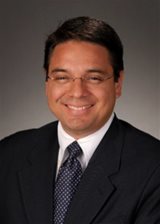 Zenon Medina-Cetina, Associate Professor Civil & Environmental Engineering, Texas A&M University
Zenon Medina-Cetina, Associate Professor Civil & Environmental Engineering, Texas A&M UniversityDr. Zenon Medina-Cetina is Associate Professor at Texas A&M University (TAMU) in the Zachry Department of Civil Engineering and holds joint appointments in the Harold Vance Department of Petroleum Engineering, the Department of Ocean Engineering, and the Department of Geography. At TAMU he leads the Stochastic Geomechanics Laboratory (SGL) conducting research in probabilistic applications in engineering to improve current practices on risk assessment and management related to natural and anthropogenic threats, to map their associated social, economic and environmental impacts. He is the Associate Director of the Center for Geospatial Sciences, Applications and Technology (GEOSAT). At TAMU he leads the largest and most active international faculty driven project called the "Yucatan Initiative Project" a collaboration between Texas A&M and Yucatan’s System of Research, and Technological Development (SIIDETEY) in Mexico, developing research, academic, and service projects to generate well-being and sustainable regional economic development for both countries and regions. Dr. Medina-Cetina served twice as Chair of the Offshore Site Investigation and Geotechnics Committee (OSIG) of the Society for Underwater Technology SUT (2012-2015). In 2013 he was named ‘SUT Fellow’, and in November 2015 he was elected President & Chair of the SUT branch in the U.S.
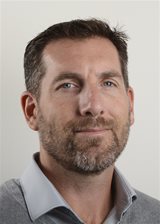 Zach Westgate, Manager, Offshore Wind USA, NGI
Zach Westgate, Manager, Offshore Wind USA, NGIZack Westgate has been an offshore geotechnical engineer for over 15 years, with a broad range of research, consulting, and management experience, and Professional Engineer registration in several states. He obtained his Master of Science degree from the University of Massachusetts Amherst in 2005, and his Doctor of Philosophy from the University of Western Australia in 2012, both of which are in Civil and Environmental / Resource Engineering with a geotechnical focus. Zack specializes in marine site characterization, subsea pipeline geotechnics and offshore foundation engineering, with expertise in physical (centrifuge) model testing and pipe/cable-soil interaction. He serves on the SUT OSIG subcommittee, the API RG7 / ISO TP6 Task Group on Pipelines & Risers, as well as the BOEM Offshore Wind Technical Advisory Panel Working Group 4 on Geophysics and Geotechnics. He has worked for large multidisciplinary engineering firms, site investigation contractors and specialist geotechnical consultants, and is currently leading NGI's efforts in establishing a local presence in Boston focused on the US offshore wind market.
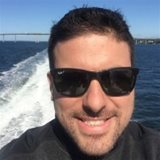 Arturo Rodriguez Tsouroukdissian, WTG Foundations Area Manager, Equinor
Arturo Rodriguez Tsouroukdissian, WTG Foundations Area Manager, EquinorCivil structural engineer as my academic background with a PhD on Earthquake engineering & Structural dynamics. Focused on Structural damping control research for large civil structures for my PhD in the early 2000’s. Started my professional career in the Civil industry (bridges, tunnels, buildings structural design). Joined the Wind Energy sector in 2008 with Onshore Wind and jumped to Offshore Wind during 2009, and held several positions from Technical leadership, Product Development, Project execution both in Europe and US. Currently I manage the Wind Turbines Foundations Area for Empire Wind project working for Equinor, covering all areas of the value chain from Engineering, Construction to Transport & Installation of the Foundations.
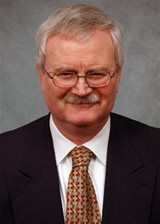 Dan O'Connell, Geotechnical Engineer, BOEM
Dan O'Connell, Geotechnical Engineer, BOEMDan O'Connell is a Geotechnical Engineer with Office of Renewable Energy Programs at the Bureau of Ocean Energy Management, Sterling, VA, since 2013. He has a B.S. in Civil Engineering from Brown University and completed graduate courses at University of Rhode Island and University of California, Berkeley. He is a Registered Professional Engineer in several states, and Registered Geotechnical Engineer in California.Prior to joining Federal Government, he gained 38 years of experience as a Geotechnical Engineering consultant in New England, California, and Mid Atlantic. Currently responsible for reviewing geotechnical investigations, engineering studies and plans for offshore renewable energy projects in Outer Continental Shelf, updating federal regulations and standards, managing research activities.
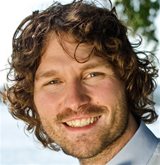 David Maloney, Country Manager Renewables Certification, DNV GL
David Maloney, Country Manager Renewables Certification, DNV GLDavid Maloney is the Country Manager for DNV GL Renewables Certification in the United States. As a Geotechnical Engineer with more than 14 years of experience, David has a detailed knowledge of the efforts required to investigate, characterize and design an offshore wind farm. David has also served as a member of the Independent Technical Review Panel for the widely recognized PISA joint industry project and has assisted in the development of both DNV GL and International Standards regarding Geotechnics and Offshore Wind. As Country Manager, David is responsible for the certification of renewable energy projects within the US, focusing primarily on DNV GL’s role as Certified Verification Agent (CVA).
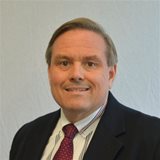 Matthew Palmer, Vice President, Offshore Wind Manager, WSP
Matthew Palmer, Vice President, Offshore Wind Manager, WSPMatthew Palmer is a power industry professional with more than 30 years of experience in the engineering, development, and management of both renewable and conventional power generation assets. He has been involved in offshore wind for 17 years, and currently manages that business in the US for WSP. Prior to joining the firm, Matthew co-founded and led Clean Power Now, a non-profit dedicated to the advancement of offshore wind in the US, and he subsequently became Project Manager for Engineering for the Cape Wind project, the first utility-scale offshore wind farm proposed in the country. He managed the structural and mechanical engineering for the project, and guided Cape Wind to receiving the first federal design approval granted to an offshore wind project. He serves as a member of the Board of Directors of the Business Network for Offshore Wind and is a co-convener of the Geotechnical Working Group in the Offshore Wind Technical Advisory Panel. Matt has an MBA from Suffolk University and a B.S. in Marine Engineering from the Massachusetts Maritime Academy.
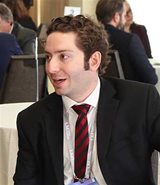 Andrew Cooper, Branch Manager, Fugro
Andrew Cooper, Branch Manager, FugroAndrew Cooper earned a Bachelor of Science in Civil Engineering from Georgia Tech, specializing in both Geotechnical and Structural Engineering. He is a certified Engineer-in-Training and Applied Project Management Professional and holds a graduate certificate in finance and accounting from Rice University. During his time with Fugro, he has performed geotechnical engineering analyses and reporting while managing nearshore and offshore geotechnical site investigations in every continent except for Antarctica. His main operational proficiency is in seafloor drilling technology, but he is also well-versed in conducting geotechnical site investigations from dynamically-positioned drill ships, jack-ups and 4-point anchored barges using drill rigs, downhole in situ testing tools and seabed equipment including vibrocores and PCPTs. As Fugro’s offshore wind lead, he manages Fugro’s marine site characterization office on the US East Coast that specializes in providing geosolutions to the industry.
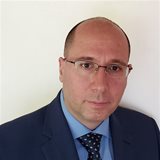 Aurelian Trandafir, Senior Geotechnical Consultant, Fugro
Aurelian Trandafir, Senior Geotechnical Consultant, FugroAurelian Trandafir has 22 years of combined consulting, research and education experience in geotechnical and geological engineering. His specialty areas include slope stability, integrated geophysical - geotechnical marine site characterization, mining geotechnics, experimental soil mechanics, earth retaining systems and soil-structure interaction. He joined Fugro in September 2011 and is currently serving as senior consultant on projects pertaining to integrated site characterization for offshore energy infrastructure development, seafloor stability assessment, pore pressure assessment within shallow marine sediments, and laboratory geotechnical testing of marine soils and mine tailings. Recently, he has been supporting integrated site characterization efforts for offshore wind farm development along the U.S. East Coast. Prior to joining Fugro, Aurelian served as Assistant Professor of Geological Engineering at the University of Utah for five years, conducting research on stress-strain-strength properties of geo-materials, slope stability, and behavior of earth retaining structures with compressible inclusion, as well as teaching courses on geological engineering design and slope stability engineering. He authored/co-authored more than 50 technical publications in geotechnical and geological engineering, and is a registered professional engineer in Texas, Colorado and Utah.
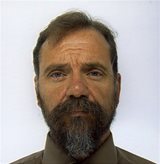 Neil Dyer, Technical Lead (Geophysics), Cathie UK
Neil Dyer, Technical Lead (Geophysics), Cathie UKNeil has over 25 years’ experience in commercial and academic geophysics and geology, specialising in the creation of subsurface geological models using multiple measurement types. He has experience of the acquisition, processing and interpretation of terrestrial, marine and airborne data, and has particular skill in the integration and management of multi-disciplinary teams. He has worked in commercial exploration onshore and offshore for minerals, water and hydrocarbons. In the near-surface sector Neil has worked predominantly on foundations and cables projects for offshore wind, but has some experience of projects for rail, tunneling and tidal power. Neil has a BSc in Geophysics and a PhD in Environmental Science (Volcanology) from Lancaster University, UK.
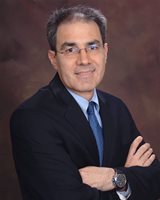 Victor Taboada, Marine Geotechnical Manager Americas, Fugro
Victor Taboada, Marine Geotechnical Manager Americas, FugroVictor Taboada received his PhD in Civil Engineering from Rensselaer Polytechnic Institute and started his academic career in 1996 as chairman of the Soil Mechanics department of the Graduate School of Engineering of the National Autonomous University of Mexico (UNAM), where he continued in 2001 as a tenured research professor at the UNAM Institute of Engineering. He received the Manuel Gonzalez Flores award in 1998 and the Javier Barros Sierra award in 2003. His 17 years of experience in offshore geotechnics started in 2003 at C&C Technologies and continued in 2004 at Fugro, where he supervised and performed seismic site response, liquefaction, and soil–pile interaction analyses for over 140 fixed offshore platforms. In 2011, he joined NGI Houston, serving as President and CEO from 2015 to 2019. He returned to Fugro in 2019 as their Marine Geotechnical Manager Americas and currently is responsible for the strategic direction of the largest advanced laboratory in the US. He is a registered professional engineer in Texas and has authored 95 technical papers on soil dynamics, which have been published in journals and international conferences.
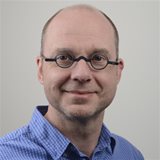 Maarten Vanneste, Principal Geoscientist Offshore Energy, NGI Oslo
Maarten Vanneste, Principal Geoscientist Offshore Energy, NGI OsloMaarten Vanneste graduated in Physics (1995) at the University of Ghent (Belgium), and received a PhD in Marine Geology and Geophysics at the same university (2000). He then joined the Marine Geology and Geophysics research unit at the University of Tromsø, Norway, as a Post-doc Researcher. Since 2006, he is a Principal Geoscientist in the Offshore Energy business area at the Norwegian Geotechnical Institute (NGI, Oslo). His research interests include amongst others offshore geohazard assessment, site characterization, geophysical mapping techniques (e.g., shear and surface wave seismics), quantitative seismic interpretation, gas hydrates and fluid flow. He also works intensively on developing site-specific ground models, using a data-driven approach for the integration of geophysical, geological and geotechnical data and information. He is Secretary of the ISO Technical Panel 19901-10 on Marine Geophysical Investigations, and Chairman of the bi-annual conference series Applied Shallow Marine Geophysics, initiated in 2014, under the umbrella of the EAGE Near-Surface Geoscience Division. He has (co-)authored over 70 papers in peer-reviewed journals and conference proceedings, and is peer-reviewer for many technical journals covering various fields of Geosciences and well as international R&D projects.
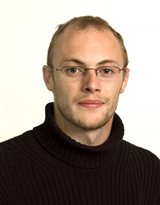 Mark Vardy, Director and Head of R&D, SAND Geophysics
Mark Vardy, Director and Head of R&D, SAND GeophysicsMark Vardy obtained an MPhys in Physics and Astronomy from the University of Southampton in 2004, before moving to the University of Southampton where he studied for an MRes and then a PhD in Marine Geophysics in 2009. After his PhD, he stayed on as a Research Fellow, before becoming a Principle Scientist for NERC. In 2013, he co-founded SAND Geophysics. Mark has worked on all manner of offshore projects, from inshore infrastructure developments to large-scale offshore installations, and with clients including Shell, BP, TOTAL, De Beers, CH2M, AECOM, and National Grid. He specialises in the development of novel high-resolution geophysical solutions to marine near surface problems. He was a co-inventor of the 3D Chirp decimetre-resolution 3D seismic system, has designed a multi-channel seismic streamer in collaboration with Geometrics, and developed two specialist seismic software packages specifically designed to provide optimal qualitative and quantitative imagery from high-resolution seismic reflection data. In particular, his development of machine learning workflows to predict geotechnical properties from seismic reflection data has garnered significant interest within the marine site survey sector. Mark sits on the Shallow Marine Geophysics committee for EAGE, is a Deputy Editor for Near Surface Geophysics, and has given invited, keynote speeches at both national and international conferences.
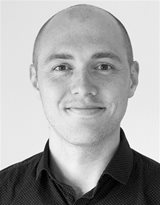 Kris Wessel Andersen, Manager, Ørsted’s Geotechnical Site Assessment Team
Kris Wessel Andersen, Manager, Ørsted’s Geotechnical Site Assessment TeamKris Wessel Andersen is the Manager of Ørsted’s Geotechnical Site Assessment Team. Prior to this he was the Lead Geotechnical Engineer responsible for geotechnical monopile design and installation assessments at Ørsted. He has gathered key experiences in monopile design, soil-structure interaction, cyclic effects on soils, 3D FEM and technical management. He has been directly involved in the PISA project as Ørsted’s Technical Expert along with other R&D projects, and is a member of the ISSMGE TC209 Offshore Geotechnics. He has performed detailed foundation design of numerous offshore wind farms in Europe and is involved in the development of several offshore wind farms in the U.S. currently being developed by Ørsted.
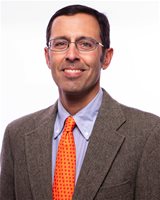 Sanjay R. Arwade, Professor Civil Engineering, University of Massachusetts, Amherst
Sanjay R. Arwade, Professor Civil Engineering, University of Massachusetts, AmherstSanjay R. Arwade is a Professor of Civil Engineering at the University of Massachusetts, Amherst. He studied structural engineering and mechanics at Princeton and Cornell and works primarily in areas of probabilistic mechanics, offshore engineering, and reliability. His work has been funded by the US National Science Foundation, BOEM, the Massachusetts Clean Energy Center, and industry.
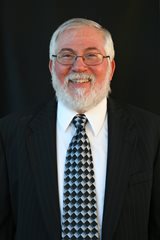 Bob Stevens, Principal Consultant, Fugro
Bob Stevens, Principal Consultant, FugroBob Stevens has forty five years experience as a geotechnical engineer, and is now a principal consultant with Fugro USA Marine, Inc. He has a BS from Rutgers University, and an MS and Ph.D. from Duke University. He is a registered professional engineer in Texas, and a Life Member of the American Society of Civil Engineers. He is a frequent contributor to the Offshore Technology Conference, the International Conference on Stress-Wave Theory, and Current Practices and Future Trends in Deep Foundations. Dr. Stevens worked for the U.S. Army Corps of Engineers for two years beginning in 1974. He was responsible for monitoring the performance of a cellular cofferdam. His duties included supervising the installation of all project instrumentation, and presenting and evaluating the data obtained. He joined the Special Projects Group of McClelland Engineers, Inc., in March 1978, and transferred to the Offshore Engineering Group in September 1979. In May 1982 he joined the staff of McClelland-Suhaimi, Ltd. in Dammam, Saudi Arabia, and was a full-time consultant to Aramco for offshore pile installations. He returned to Houston in January 1986. During his tour in Saudi Arabia, he monitored driving system and hammer performance using our Dynamic Monitoring System (DMS), Pile Driving Analyzer (PDA), and Ram Velocity Monitor (RVM). In addition to supervising the installation of over 100 platforms in the Arabian Gulf, Dr. Stevens has collected pile-driving data and made on-site recommendations in the Gulf of Mexico, Red Sea, and offshore California, Angola, Argentina, Colombia, Indonesia, Japan, Malaysia, New Zealand, Taiwan, and Venezuela. He has also monitored pile driving for the Arkansas State Highway and Transportation Department, the California Department of Transportation (CALTRANS), the Louisiana Department of Transportation and Development and the Pennsylvania Turnpike Commission. He married Carol Peyton in January 1976, has two sons, and three granddaughters.
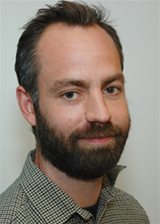 Rasmus Tofte Klinkvort, Senior Consultant, NGI
Rasmus Tofte Klinkvort, Senior Consultant, NGIAfter finalising his PhD on monopile foundations for offshore wind turbines, Rasmus joined NGI in 2012. After 3 years in Oslo, he relocated to Paris and is now working as consultant for NGI from there. His main focus is offshore foundation design and he has worked extensively on projects with challenging soil conditions covering topics such as installation design, design for cyclic loading and also re-assessment of capacity based on aging of the soil. He has lead, reported and published several advanced centrifuge test studies on monopile and suction caisson foundation solutions for offshore wind turbines in both sand and clay. Rasmus uses this experience from offshore geotechnical design, offshore site work, offshore laboratory work, research and project management as foundation to navigate between theory and practice, often working in an integrated team of geotechnical engineers, geophysicists, geologists and programmers. Lately, being exposed to multi-disciplinary R&D initiatives and sensing a growing interest for scripting and optimisation, he started working with Python programming in combination with Geostatistics and Machine Learning techniques as important tools together with more classical geotechnical interpretations.
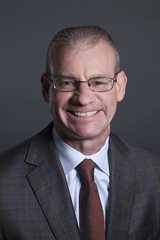 Robert Gilbert, Department Chair Civil, Architectural and Environmental Engineering, The University of Texas at Austin
Robert Gilbert, Department Chair Civil, Architectural and Environmental Engineering, The University of Texas at Austin“ROBERT B. GILBERT P.E., Ph.D., D.GE, NAE is Chair of the Department of Civil, Architectural and Environmental Engineering at The University of Texas at Austin. He joined the faculty in 1993 after practicing as a geotechnical engineer for five years with Golder Associates Inc. His technical focus is the assessment, evaluation and management of risk for civil engineering systems.”
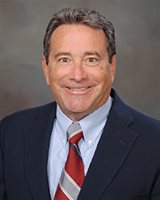 Charles Aubeny, Professor Civil Engineering, Texas A&M University
Charles Aubeny, Professor Civil Engineering, Texas A&M UniversityDr. Charles Aubeny is a Professor of civil engineering at Texas A&M University, specializing in geotechnical engineering. He is a licensed professional engineer in Texas, California and Colorado. He received a BS degree at the University of Arizona, an MS degree at the University of Colorado in Denver and a doctoral degree in civil engineering at the Massachusetts Institute of Technology. Dr. Aubeny has held his current faculty position at Texas A&M University since 1999. His research and professional interests include deep-water anchors, subsea risers and conductors, subsea gravity foundations, embankments, slope stability, excavations and retaining structures. He teaches courses in geotechnical engineering, foundation engineering, slope stability and retaining walls, and numerical methods. He consults on wide variety of projects, including projects in deep-water Gulf of Mexico and offshore Australia. He received the Thomas A. Middlebrooks Award in 2002 and is a Fellow of the American Society of Civil Engineers.
 Ahmed Hussien, Graduate Student, The University of Texas at Austin
Ahmed Hussien, Graduate Student, The University of Texas at AustinAhmed Hussien is a Ph.D. student at The University of Texas at Austin, studying and performing research on soil-structure interactions for offshore applications. Ahmed received his master’s degree from New Mexico Tech and subsequently worked at Fugro USA Land prior to returning to school. When he’s not in the lab or field, he enjoys interacting with students in his roles as teaching assistant and mentor.
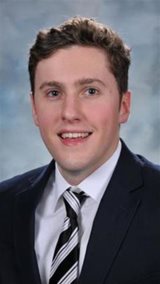 Timothy Keefe, Graduate Student, University of Rhode Island
Timothy Keefe, Graduate Student, University of Rhode IslandTim Keefe is a current master’s student at the University of Rhode Island in the Department of Civil and Environmental Engineering. He obtained his bachelor’s degree in civil engineering from the University of Rhode Island in 2019. His master’s research focuses on cyclic tensile pile load testing in coastal conditions and is to be completed at the end of June 2020. The research is funded by the U.S. Bureau of Ocean Energy Management (BOEM), coordinated by NGI Houston, and is in collaboration with the University of Texas at Austin. After graduation, he will be employed as a field engineer with Keller North America.
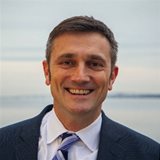 Christopher Baxter, Joint Professor, Departments of Ocean/Civil & Environmental Engineering, University of Rhode Island
Christopher Baxter, Joint Professor, Departments of Ocean/Civil & Environmental Engineering, University of Rhode IslandChristopher Baxter is a joint Professor in the Departments of Ocean/Civil and Environmental Engineering at the University of Rhode Island and was Chairman of the Ocean Engineering Department from 2011-2017. He has been a member of the URI faculty since 2001 and is a registered professional engineer in Rhode Island. Dr. Baxter’s research expertise is in the areas of marine geotechnics, fundamental soil behavior, coastal resilience, and offshore renewable energy. He is primarily an experimentalist, and has focused much of his research on characterizing unique or difficult soils such as sensitive marine clays in Maine, gassy clays from the North Sea (at the Norwegian Geotechnical Institute), weakly cemented sands in oil-bearing formations in the Caspian Sea, non-plastic silts in Rhode Island, and calcareous sands in Puerto Rico. With respect to coastal resilience, Dr. Baxter has been actively working on the development of fragility curves for artificial dunes reinforced with geosynthetic sand containers. Dr. Baxter was active in the Rhode Island Ocean Special Area Management Plan (OceanSAMP) from 2008-2010, which was an advanced marine spatial planning exercise that aided in the permitting of the first offshore wind farm in the U.S. off of Block Island, R.I. He is currently the lead investigator on a project funded by the Bureau of Safety and Environmental Enforcement (BSEE) to perform structural health monitoring of the Block Island Wind Farm.
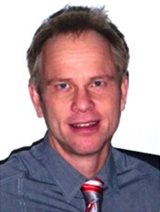 Per Sparrevik, Expert Adviser - Monitoring Technology, NGI
Per Sparrevik, Expert Adviser - Monitoring Technology, NGIPer Sparrevik, Technical Adviser at NGI (MSc. 1985), with more than 30 years' experience from various offshore and subsea projects. His expert skills are especially related to instrumentation systems for real-time installation control and structural health monitoring of offshore structures and foundations. In addition, he has a solid track record developing monitoring solutions for large scale field tests, geohazard assessment, and geophysical applications. He has a broad professional background that combined with extensive field experience includes geotechnical and structural aspects, sensing techniques and data presentation as well as practical aspects related installation and use of sensors systems in harsh conditions (offshore/onshore). His trademark is "Development of customized monitoring solutions in a practical setting". Mr. Sparrevik has been a pioneer within the development of bucket foundations and suction pile technology with focus on large scale field tests and structural monitoring. Since 2009 Mr. Sparrevik has been technical responsible for development of instrumentation systems used for monitoring control during installation of offshore wind turbine foundations.
Don DeGroot, University of Massachusetts
Proserpine Peralta, Fugro
All profits generated from this event help to support SUT-US student scholarships, student chapters and outreach programs.
Organizing Committee:
Offshore Site Investigation & Geotechnics Committee (OSIG)
GoToWebinar
- You can view the webinar on the web app using a Google Chrome or Firefox browser preferably. Go to www.gotomeeting.com/webinar and clic 'Join' at the top right of the screen (above 'Start for Free' blue buttom). You will be prompted to enter the 9-digit Webinar ID (included in the email receive with the webinar information) and your business email.
- You can download the desktop app using the following link: https://support.goto.com/webinar/help/download-now-g2w010002. We strongly suggest you download and install the app the day prior to the actual session to avoid last minute technical issues.
- You can also attend the session using your mobile phone. The following link provides useful information on installing the app and joining a webinar: https://support.goto.com/webinar/help/gotowebinar-for-mobile-devices-g2w050033
- If you have a question and/or comment for the presenters or organizers, you can contact them throught the 'Questions tab' in your control panel, or the 'Chat' located at the end of your control panel as well.
- For further support and frequently asked questions visit the GoToWebinar support page: https://support.goto.com/webinar

 Add this Event to your
Add this Event to your

